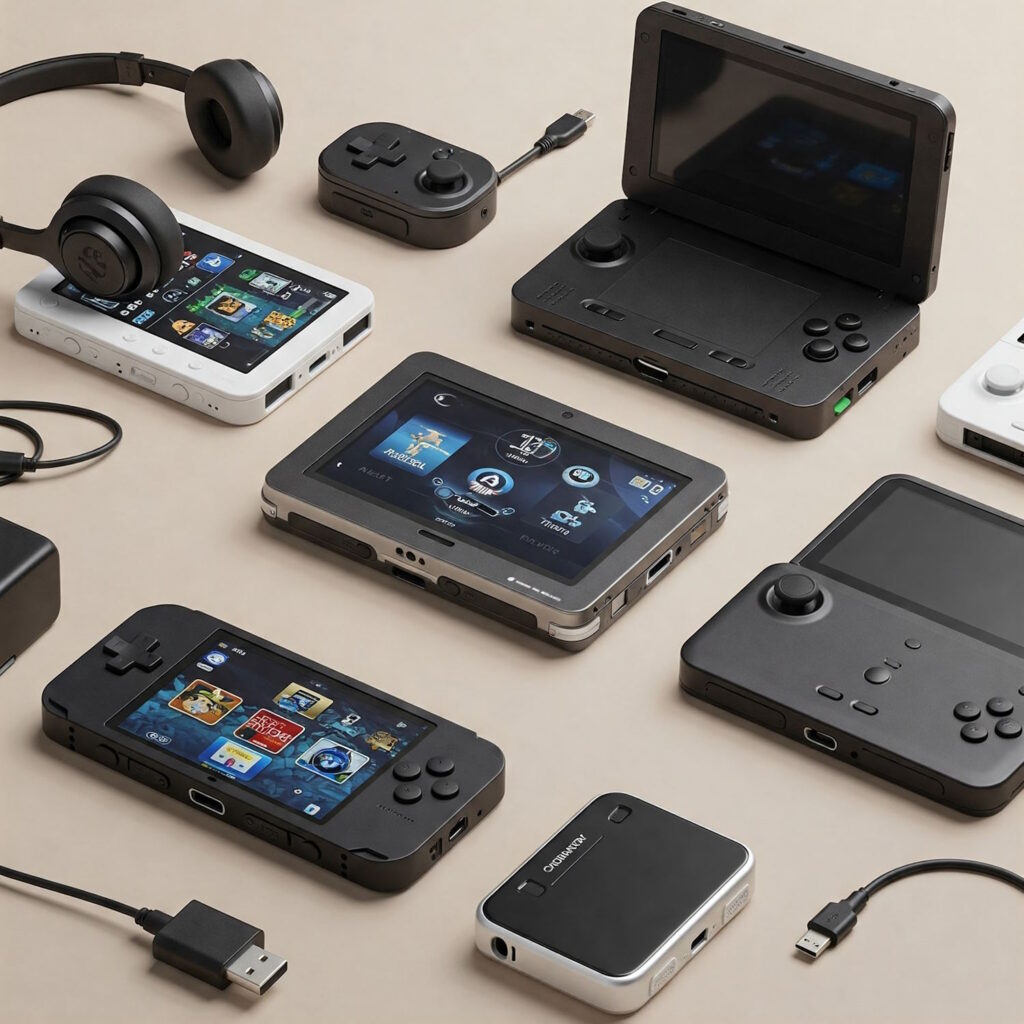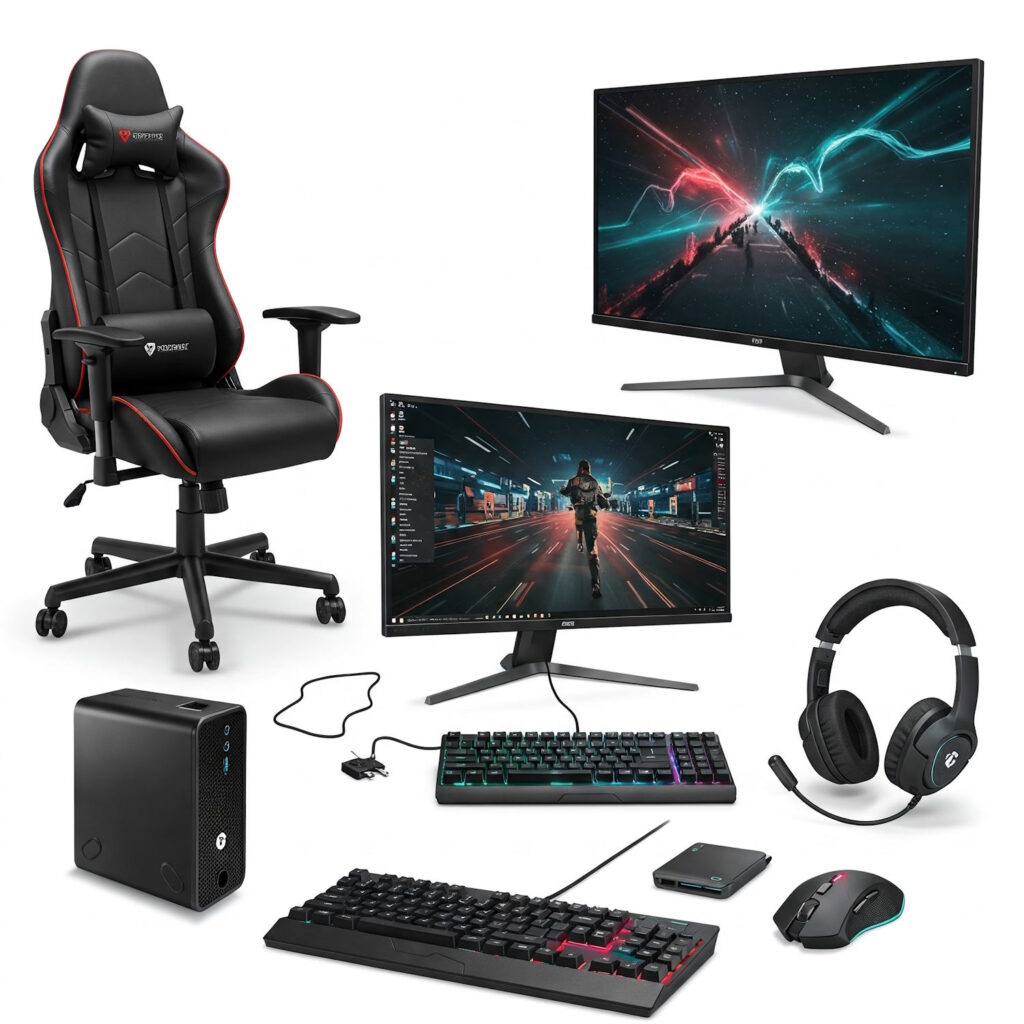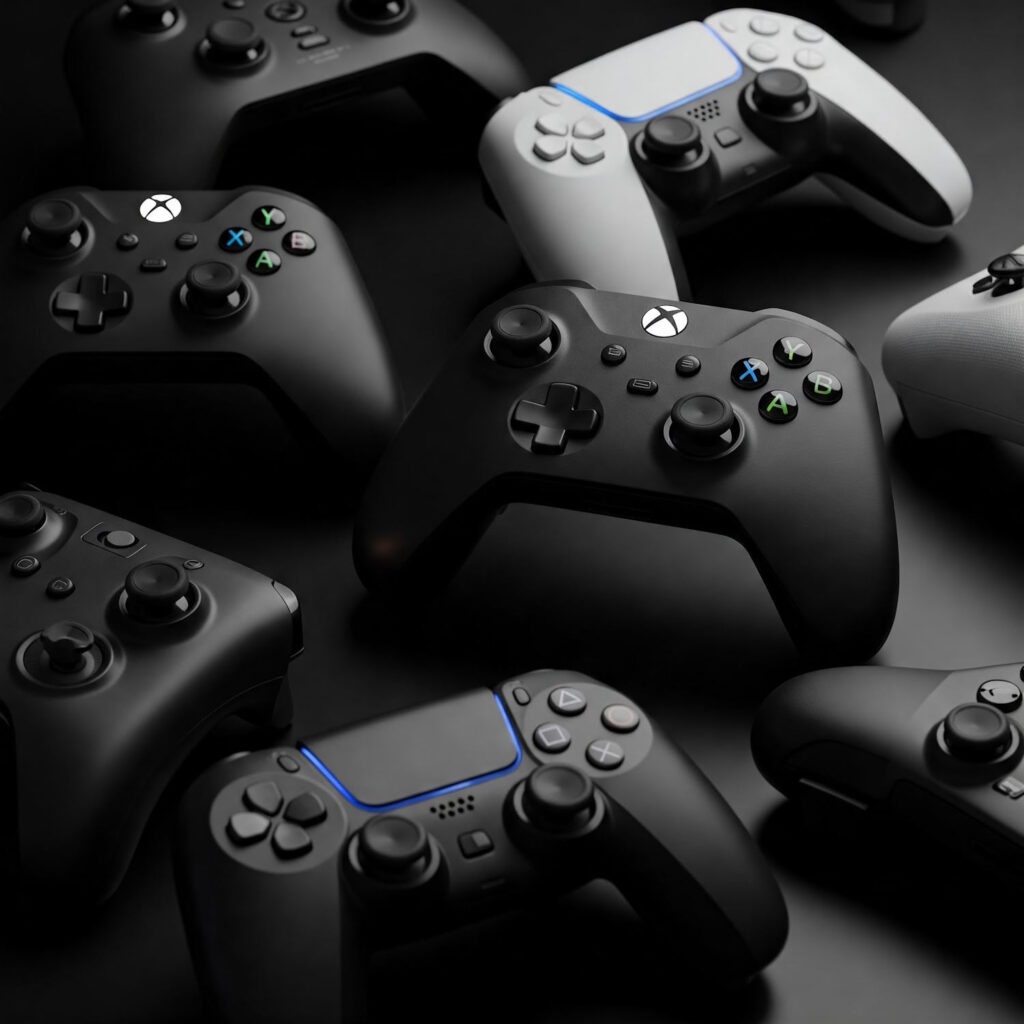Introduction to Game Streaming
In recent years, game streaming has rapidly gained traction, transforming from a niche activity into a mainstream phenomenon embraced by millions around the globe. With the advent of platforms such as Twitch, YouTube Gaming, and Facebook Gaming, both amateur and professional gamers have discovered the exciting opportunity to share their gaming experiences live with an engaged audience. This surge in popularity can be attributed to several factors, including the rise of esports, the accessibility of streaming technology, and the growing community surrounding video games.
Streamers today are not just players; they are entertainers, engaging directly with their viewers through real-time chat and interaction. This two-way communication fosters a sense of community, where fans feel connected to their favorite streamers, creating a loyal following that contributes to the streamer’s success. Audiences flock to streams not only to witness gameplay, but also to enjoy entertaining commentary, share in the excitement, and participate in discussions about gaming culture and trends. As a result, many gamers are pursuing streaming as a viable career option, with the potential for revenue generation through ads, donations, and subscriptions.
However, navigating the world of game streaming requires more than just passion and charisma. High-quality equipment and gadgets play an essential role in ensuring a seamless streaming experience. The right tools can significantly enhance both the streamer’s performance and the viewer’s experience. From microphones that capture crisp audio to webcams that provide sharp visuals, the importance of having a robust setup cannot be overstated. As the gaming industry continues to evolve, so too does the necessity for streamers to invest in the proper technology to attract and retain their audience. In this landscape, staying informed about essential gadgets is crucial for anyone looking to game stream like a pro.
High-Performance Gaming PC or Console
One of the fundamental elements of a successful game streaming setup is the choice between a high-performance gaming PC or a console. Each option offers distinct advantages and disadvantages, making it crucial for streamers to select the one that aligns with their gaming style and streaming objectives. A high-performance gaming PC typically provides superior customization capabilities, enabling users to swap components such as graphics cards, RAM, and processors. For streamers, this means a more robust performance and the ability to handle demanding games while simultaneously managing streaming software, which can be resource-intensive.
Recommended specifications for a gaming PC include at least an Intel i5 processor or its AMD equivalent, 16GB of RAM, and a dedicated graphics card like NVIDIA’s RTX 3060 or AMD’s RX 6600 XT. These specifications ensure smooth gameplay, high frame rates, and the capacity to stream in high definition. Additionally, the flexibility to upgrade parts allows for prolonged viability in the constantly evolving gaming landscape.
On the other hand, console gaming has its own set of benefits. Consoles such as the PlayStation 5 and Xbox Series X are optimized for performance out of the box. They are user-friendly, with minimal setup required, making them an attractive choice for individuals new to gaming. However, consoles do not offer the same degree of upgradability as a gaming PC, which can be a drawback for dedicated streamers who wish to keep pace with gaming advancements.
Ultimately, the decision between a high-performance gaming PC or a console hinges on personal preference and specific streaming needs. Streamers who prioritize customization and performance may lean toward a gaming PC, while those who value simplicity and ease of use might prefer consoles. Understanding these nuances can help aspiring streamers make informed choices that enhance their overall gaming and streaming experiences.
Quality Webcam: The Key to Engaging Streams
In the realm of game streaming, a quality webcam serves as a crucial element for both the streamer and the audience. High-resolution visuals significantly enhance the viewing experience, allowing viewers to connect with the streamer on a more personal level. A webcam with at least 1080p resolution is recommended, as this provides clarity and sharpness, making facial expressions and movements more discernible. In addition to resolution, the frame rate plays a vital role; a webcam capable of delivering at least 30 frames per second (fps) ensures smooth video playback, minimizing lag and creating a professional appearance.
Low-light performance is another important feature to consider when selecting a webcam. Many streamers operate in varying lighting conditions, and a webcam with good low-light performance can retain image quality even in dim settings. Look for webcams that feature advanced image sensors or HDR (high dynamic range) capabilities, as these will help maintain visibility regardless of lighting circumstances.
When it comes to budget considerations, various options are available to cater to different financial limits. For those on a tighter budget, models such as the Logitech C270 or Microsoft LifeCam HD-3000 provide decent performance without breaking the bank. Mid-range choices like the Logitech C922 Pro Stream offer superior resolution and low-light capabilities, catering to more serious streamers. For those willing to invest further, premium options like the Razer Kiyo Pro or the Elgato Facecam deliver exceptional features, including customizable field of view and built-in advanced lighting adjustments.
Ultimately, investing in a quality webcam can make a considerable difference in viewer engagement. An expressive and clear presentation enhances the streaming experience, building a connection between the streamer and their audience. By choosing the right webcam, streamers can elevate their broadcasting quality and create an inviting atmosphere for their viewers.
Microphones: Ensuring Clear Audio
In game streaming, the clarity of audio can significantly affect the viewer’s experience. A crisp and professional sound not only enhances communication with viewers but also adds to the overall engagement of the content. To achieve this, selecting the right microphone is crucial. There are two primary types of microphones to consider: dynamic and condenser microphones. Each comes with its own advantages tailored to different streaming environments.
Dynamic microphones are known for their durability and ability to reject background noise, making them ideal for streamers who might be in a noisy environment or share their setup with others. These microphones typically require more power and perform best in situations where sound sources are relatively close to the microphone. On the other hand, condenser microphones are recognized for their sensitivity and wider frequency response, capturing a more detailed sound quality. They are particularly suited for quieter settings where sound clarity is paramount.
For streamers on a budget, options like the Audio-Technica ATR2100x-USB or the Blue Snowball iCE provide excellent sound quality without breaking the bank. These models are user-friendly and versatile, suitable for both beginners and seasoned streamers. For those looking to invest in premium microphones, the Shure SM7B and the Rode NT1-A are highly regarded in the streaming community, offering professional-grade audio that can elevate a stream’s overall quality.
Beyond choosing the right microphone, placement and settings play a pivotal role in maximizing audio quality. Positioning the microphone close to the mouth while being mindful of avoiding plosive sounds can enhance clarity. Additionally, adjusting the gain settings will help to find the sweet spot between capturing sharp vocals and minimizing background noise, creating a polished listening experience for viewers. By understanding the importance of audio clarity, streamers can significantly improve their content quality, ensuring their audience enjoys a professional streaming experience.
Capture Cards: Stream Quality Gaming Content
For gamers looking to elevate their streaming experience, a capture card is an essential device. It serves as an intermediary between the gaming console and the streaming platform, allowing streamers to capture high-quality video output and deliver it to their audience with minimal latency. The significance of a capture card becomes particularly apparent for console gamers, as most modern consoles do not natively support high-definition streaming or advanced features some streamers desire.
There are two primary types of capture cards: internal and external. Internal capture cards are installed directly into a gaming PC, providing a stable and often superior performance for serious streamers. External capture cards, on the other hand, connect via USB and are portable, making them a popular choice for console gamers who wish to stream on-the-go or without the hassle of opening their PC case. When selecting a capture card, it is crucial to consider compatibility with your system; for example, some capture devices may work better with PlayStation or Xbox consoles. It is advisable to check specifications, like video resolution support and frame rate capabilities, to ensure optimal performance.
The benefits of using a capture card are numerous. They typically provide superior video quality compared to direct console streaming, helping to ensure that viewers receive a crisp, clear image. Moreover, capture cards often include support for multiple streaming services, allowing gamers to choose their preferred platforms easily. For those looking for product recommendations, popular options include the Elgato HD60 S for beginners, which offers excellent functionality at an accessible price, and the AVerMedia Live Gamer 4K for those desiring top-tier performance with support for 4K resolutions. By utilizing a suitable capture card, gamers can significantly enhance their streaming quality and engage their audience more effectively.
Lighting Equipment: Brighten Up Your Setup
A professional-quality game stream relies heavily on various factors, one of the most critical being adequate lighting. Proper lighting not only enhances the overall visual quality of your stream but also helps create a more engaging atmosphere for your viewers. Shadows can detract from the experience, so investing in effective lighting equipment is paramount for any serious content creator.
Among the most popular choices for lighting are ring lights and softbox lighting. Ring lights are favored for their ability to evenly illuminate the face, reducing shadows and providing a pleasing aesthetic. They are especially beneficial for streamers who want to show their expressions clearly while gaming. Softbox lighting, on the other hand, diffuses light into a soft, even glow that can fill a room without causing harsh shadows. This blend of soft lighting creates a more inviting environment and is ideal for multi-cam setups or for when you are showcasing game elements as well.
When setting up your lighting, positioning is crucial. The lights should be placed at a 45-degree angle to your face to minimize shadows and avoid glare on your gaming setup. Additionally, consider using multiple light sources to achieve the desired effect; for instance, a combination of a main light and fill light can significantly enhance your streaming setup’s visual quality.
If you are on a budget, DIY lighting solutions such as using desk lamps with daylight bulbs or affordable LED panels can serve as practical alternatives. You can create a more tailored lighting setup by using reflectors or diffusion materials to soften harsh lights. These techniques can be valuable for streamers looking to elevate their game without breaking the bank. High-quality lighting is an essential component for professional-level streams, making thoughtful choices in this area fundamental to your success.
Streaming Software: The Backbone of Your Stream
One of the most critical elements of successful game streaming is the choice of streaming software. Various options are available, each offering unique features and user experiences tailored to different needs. Among the most popular streaming tools are OBS Studio, Streamlabs, and XSplit. These applications serve as the backbone of your stream, enabling you to capture video and audio from your gaming setup and broadcast it to your audience.
OBS Studio, an open-source software, is widely favored for its flexibility and robust functionality. It supports various plugins and has a vast community offering support and resources. The software allows for detailed customization, making it optimal for streamers who want to create a tailored experience. Its user interface may seem intimidating at first, but numerous guides and tutorials can facilitate the learning curve.
Streamlabs, on the other hand, is built on the foundation of OBS Studio but is designed with streamers in mind. It provides a more user-friendly interface, especially for those who are new to streaming. Additionally, Streamlabs offers integrated tools like alerts and overlays that enhance viewer interaction, making it a convenient option for streamers who want an all-in-one solution for managing their streams.
XSplit provides another viable option, particularly for broadcasters who prioritize ease of use. While it is a paid software unlike its competitors, the streamlined interface and customer support make it attractive for those willing to invest in their streaming setup. XSplit offers seamless integration with various platforms and comes equipped with features like multi-streaming capabilities, making it efficient for reaching a wider audience.
When selecting a streaming software, consider your individual needs, experience level, and the specific features that will enhance your streaming experience. Proper configuration and setup of the chosen software are crucial for achieving a professional-quality stream, so take the time to explore tutorials and community forums for assistance on maximizing its potential.
Accessories for Comfort and Productivity
To elevate your game streaming experience, investing in the right accessories is not merely beneficial, but essential. Ergonomic chairs stand out as one of the most significant additions to any gamer’s setup. Such chairs are specifically designed to support the natural curvature of the spine, reducing fatigue during extended gaming sessions. They often come with adjustable features, allowing users to customize their seating position, which in turn promotes comfort and enhances focus on the stream.
Complementing an ergonomic chair is a quality gaming desk, which provides ample space and organization for your streaming equipment. Look for desks that offer cable management solutions, adjustable height settings, and sufficient surface area for dual monitors or additional hardware. A good desk can significantly impact productivity, enabling you to create a clean and streamlined workstation that fosters creativity and minimizes distractions.
Additionally, versatile storage solutions, such as controller holders, can help maintain an organized gaming environment. These holders ensure that your controllers are readily accessible while protecting them from wear and tear. The ease of access increases efficiency, particularly during fast-paced gaming scenarios, enhancing the overall streaming experience.
Productivity can also be improved with the use of specialized tools such as stream decks and hotkey controllers. Stream decks allow for quick access to various controls, helping you manage your stream effortlessly. They can be customized with different keys assigned to specific actions, simplifying tasks like scene transitions or audio adjustments. Meanwhile, hotkey controllers can facilitate seamless switching between different applications or overlays without interrupting the flow of gameplay.
Incorporating these accessories into your gaming setup can dramatically improve not only your comfort but also your streaming efficiency, allowing you to focus on delivering engaging content to your audience.
Building Your Unique Streaming Brand
In the competitive landscape of game streaming, establishing a distinctive brand is paramount for success. A strong brand not only helps in standing out but also fosters a connection with your audience, thus enhancing viewership. To begin with, channel design plays a pivotal role. This encompasses your video overlays, stream graphics, and the overall aesthetic of your channel. A coherent visual theme aligned with your gaming style is likely to attract like-minded viewers. Investing in quality design elements, including logos, can significantly elevate your brand perception.
Your logo serves as the face of your channel and should encapsulate what you represent. Therefore, consider putting effort into creating a logo that is memorable and reflective of your personality or gaming persona. It can be beneficial to seek feedback from peers or followers to refine this aspect. In addition to aesthetics, an active and engaging social media presence is essential. Platforms like Twitter, Instagram, and TikTok can be leveraged to share behind-the-scenes content, updates, and personal interactions, strengthening the relationship with your audience. Regularly posting engaging content that resonates with your followers can increase your visibility and enhance community engagement.
Substantial interaction with your audience during streams and on social media is critical for nurturing a loyal community. Responding to comments, conducting Q&A sessions, and recognizing avid followers fosters a sense of belonging among your audience. Authenticity is key in this journey; being genuine in your interactions contributes to building trust and can lead to a more committed following. A community built on authentic relationships will support you, not just as a streamer, but as a content creator with interests and passions. Therefore, ensure that your branding reflects this authenticity as you navigate the vibrant world of game streaming.



